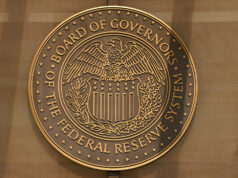PHL banks seen to face risks from growing SME, retail loan portfolio
PHILIPPINE BANKS may have to face risks that come from the uptick in the share of retail and SME (small and medium-sized enterprises) loans, according to Moody’s Investors Service.
“Strong loan growth over the last few years and the increasing share of retail and SME loans point to downside risks to asset quality, but the Philippines’ robust economic growth and healthy financial metrics of the large conglomerates in the country suggest that these risks may not materialize over the next 12-18 months,” Srikanth Vadlamani, Vice-President and Senior Credit Officer at Moody’s, said in an e-mail.
As of the third quarter, the economy expanded by 6.1%, a pickup from the 5.6% and 5.5% seen in the first two quarters of the year. This brought the nine-month average growth to 5.8%, which is still short of the minimum 6% the government hopes to achieve this year.
In its report titled “Banks-Asia Pacific 2020 Outlook,” the firm said nonperforming loans in the country will continue to be below 2% by 2020, which is similar to its level in 2018.
Moreover, Moody’s said some banking systems will see lower problem loan ratios as lenders are gradually cleaning up their legacy problem loans.
“Coverage of loan loss reserves against problem loans is generally strong in APAC, with the weighted average for rated banks at 150%,” the report said.
Earlier, Rizal Commercial Banking Corp. Chief Economist Michael L. Ricafort noted that loan growth in recent years averaged at 15-17% and even close to 20% in 2018.
“Faster expansion in banks’ loan portfolios may have led to a commensurate increase in NPLs (nonperforming loans) as well. Gross NPL ratio of Philippine banks has picked up to 1.66% as of September 2019, among the highest in 3 years, coming from a record low of 1.24% as of end-2017,” he said in an e-mail.
Mr. Vadlamani is of the view that bad loan ratios in the Philippines could continue to see a marginal increase as they have seen an uptick in the last two years. Despite this, he thinks banks are generally safe with their asset quality.
“Overall asset quality will stay broadly stable over the next 12-18 months, with any deterioration proving marginal,” Mr. Vadlamani said.
Latest data from the Bangko Sentral ng Pilipinas showed loans disbursed by commercial banks grew by 9.3% in October, a slower pace compared to the 10.5% in September. — Luz Wendy T. Noble



